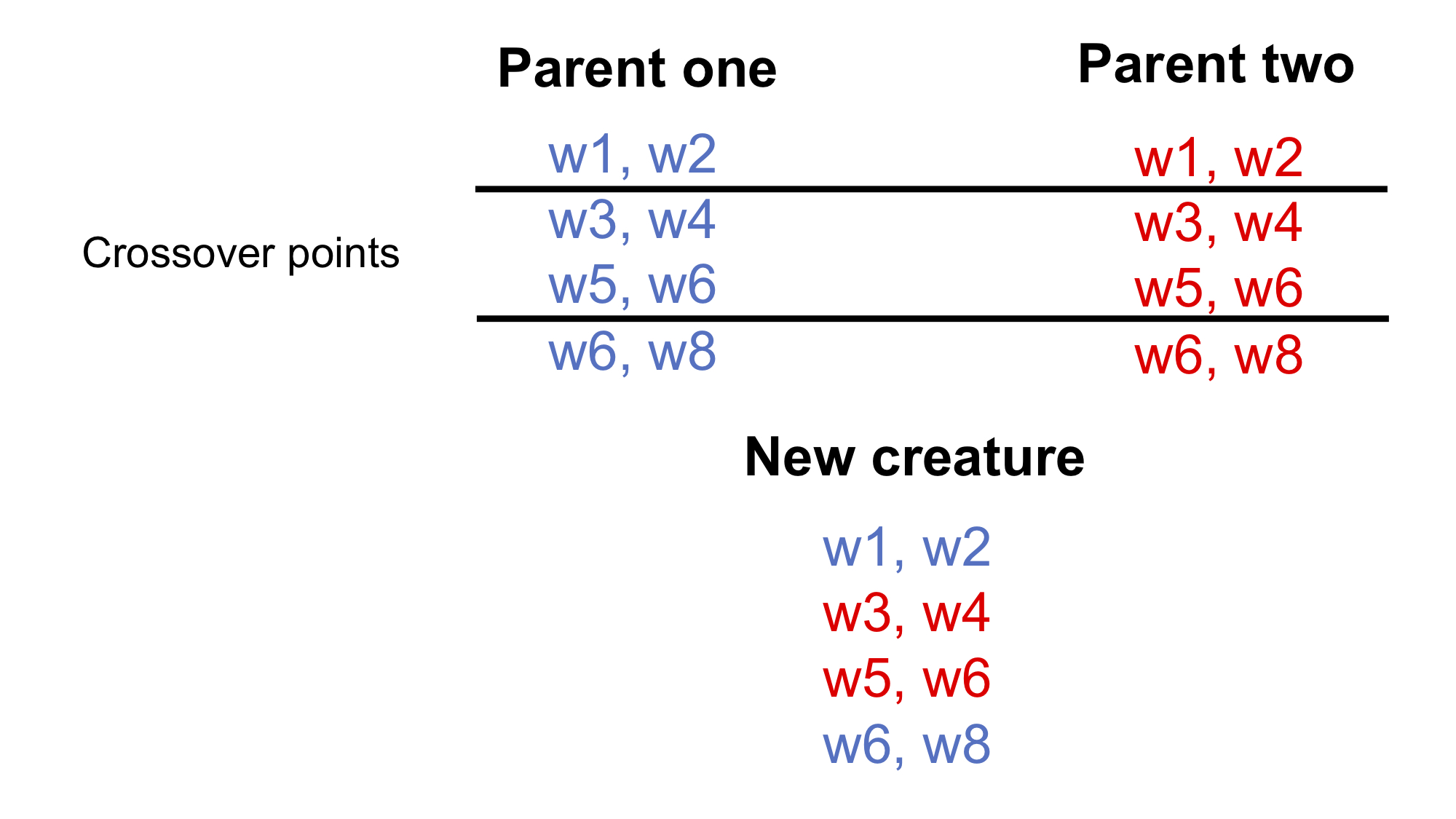Hi. I received some information about chromosomes, so I can try to answer my own questions.
Chromosomes do encode the weights in the neural network. These weights are what vary between creatures, and are what is passed down from generation to generation.
The weights are numbers (1.3, 0.2, -0.8).
To make a chromosome, these numbers are converted into a binary format (https://en.wikipedia.org/wiki/Single-precision_floating-point_format). Then the binary representations are placed one after the other to form a long string that might look something like this
00111111101001100110011001100110 00111110010011001100110011001101 10111111010011001100110011001101
During the reproduction step, the binary strings from each parent are cut at a specific point, and the corresponding parts from each parent are exchanged, creating two new offspring using one part from each parent.
This is an example of one-point crossover, not two-point crossover, as I showed in the picture above.
OK, I hope that helps others understand how chromosomes work.
Bruno


